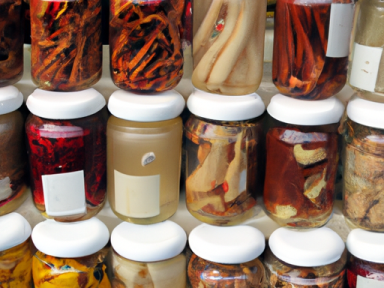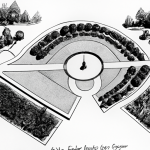
Long-Term Food Preservation Techniques
Preserving food for long-term storage is an essential skill every self-reliant individual should possess. In times of uncertainty, having a stockpile of preserved food can provide a sense of security and peace of mind. Today, we will explore various methods for long-term food preservation, including canning, smoking, and dehydrating. By learning these techniques, you can ensure your family’s survival in the face of any unforeseen circumstances.
1. Canning
Canning is a tried-and-true method of food preservation that has been used for centuries. It involves sealing food in jars to prevent spoilage. The process of canning kills bacteria and microorganisms, thus extending the shelf life of the food.
To can food, you will need a pressure canner or a water bath canner, depending on the type of food you are preserving. Fruits, pickles, and high-acid foods can be safely canned using a water bath canner, while low-acid foods, such as meats and vegetables, require a pressure canner. Follow specific canning recipes and guidelines to ensure the safety of your preserved food.
2. Smoking
Smoking is an ancient technique used to preserve meat and fish. Smoking works by exposing food to smoke from burning wood, which helps to preserve it by drying it out and adding a distinct flavor. The smoke acts as a natural preservative and inhibits the growth of bacteria.
To smoke food, you will need a smoker or a makeshift smoking setup. First, prepare the food by brining or salting it to remove excess moisture. Then, place the food in the smoker and maintain a constant temperature for hours or even days, depending on the type of meat or fish being smoked. Properly smoked food can last for months when stored in a cool and dry place.
3. Dehydrating
Dehydrating is another effective method of long-term food preservation. By removing moisture from food, you create an environment where bacteria and microorganisms cannot thrive. Dehydrated food is lightweight, compact, and retains most of its nutrients.
To dehydrate food, you can use a dehydrator or an oven set at a low temperature. Slice the food into thin, even pieces and place them on the dehydrator or oven trays. Allow the food to dry for several hours or overnight until it becomes brittle. Once dehydrated, store it in airtight containers or vacuum-sealed bags.
4. Root Cellaring
Root cellaring is an age-old method of preserving fruits, vegetables, and even some root crops for extended periods. This technique involves storing produce in a cool and dark place with high humidity to inhibit spoilage.
Ideally, a root cellar provides the optimal conditions for storing root crops, such as potatoes, carrots, and onions. However, if you don’t have access to a traditional root cellar, you can simulate the same conditions using an unused basement, a cool closet, or even burying food items underground in insulated containers. Regularly check your stored produce for signs of decay and remove any spoiled items to prevent contamination.
Conclusion
Long-term food preservation is a vital aspect of self-reliance and preparedness. By mastering techniques like canning, smoking, dehydrating, and root cellaring, you can ensure a stable food supply in uncertain times. Take the time to learn these skills and make them a part of your self-sufficiency journey. By doing so, you are taking a proactive step towards safeguarding your well-being and that of your loved ones.



GIPHY App Key not set. Please check settings